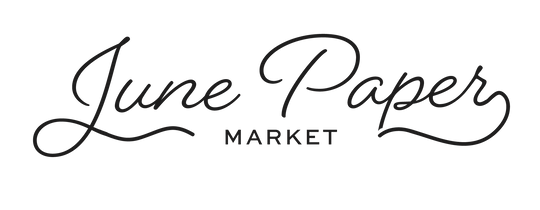So you’ve purchased a planner and are now wondering how to use it consistently. Here are some simple tips for developing the habit of writing in your planner and start using it to organize your life.
Shift your mindset to your desired identity: an organized person
When you start a new habit, you need to make it part of your identity. Think about yourself as someone who writes in their planner. Literally, shift your mindset to your desired identity: an organized person who uses a planner. This simple self-affirmation will help you focus on forming new habits that support your new self.
If you think of yourself as a person who plans ahead, then you will be more likely to implement this habit of doing so.
Keep your planner visible
Create an environment that makes using your planner a natural option. Make sure your planner is in an easy-to-reach spot where you will see it every day, like on your desk or near the kitchen table where you eat breakfast every morning. This way, you won't have to make an extra effort to write things down when they come up throughout your day.
Establish a Routine
Be specific about when you will use your planner. To do this create an implementation intention, making a commitment to yourself that "When situation X arises, I will do Y. For example - “When I sit down at my desk Monday morning, I will write out all of my commitments in my planner for the week ahead”.
Or
“When the first day of the month comes around, I will look at my monthly calendar and write out my family's appointments for the month ahead”.
This will make using your planner likely to happen because you’ve already ironed out how and when you will. Once you get into a rhythm of blending the use of a planner into your life, it will become a routine.
Use Habit Stacking
Pair using your planner with something you naturally do. Habit stacking is the method of adding a new habit to another existing habit... For example, if you drink a hot cup of coffee first thing each morning, try pairing this activity with writing in or reviewing your planner.
The idea is to find things in your life you naturally do without thought, your established routines. Then layer on your desired routine (writing in your planner), combining multiple habits into one action, which makes it easier to stick to your new routine.
Think of your planner as a time management tool
By using your planner as a time management tool, you can better manage your tasks, priorities, and projects.
Here are some examples of how to use your planner as a tool for managing your time:
-
Use it to schedule appointments and meetings in advance so you don't forget them at the last minute. This will help keep you from missing important engagements or being late.
-
Use it as a catch-all where you write down everything from doctor's appointments all the way down to making sure that someone picks up groceries on Tuesday. The idea is that you establish your planner as a central hub to clear the many lingering to dos in your mind.
The truth is, The more often we repeat something, the more likely it is that we'll do that thing automatically in the future without really thinking about it. If you are in search of a planner that will help keep your to do list under control and is easy to use - we highly recommend our weekly and daily planners.

